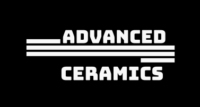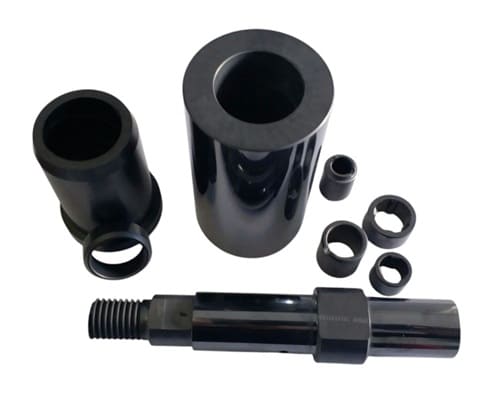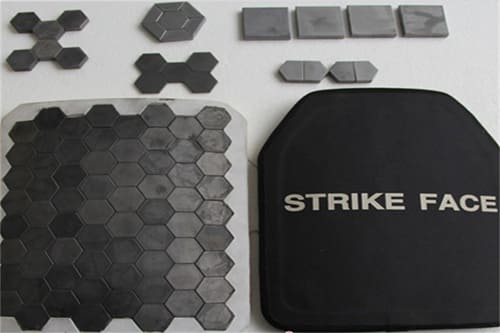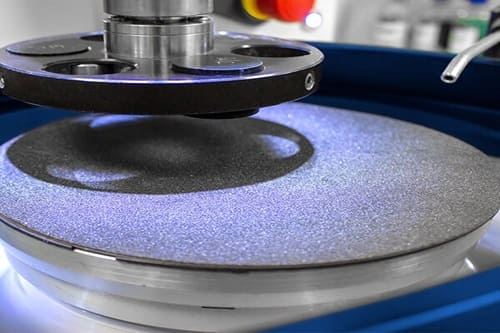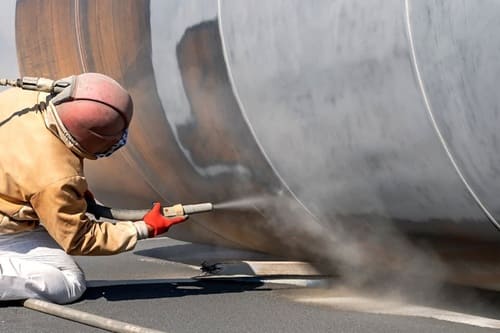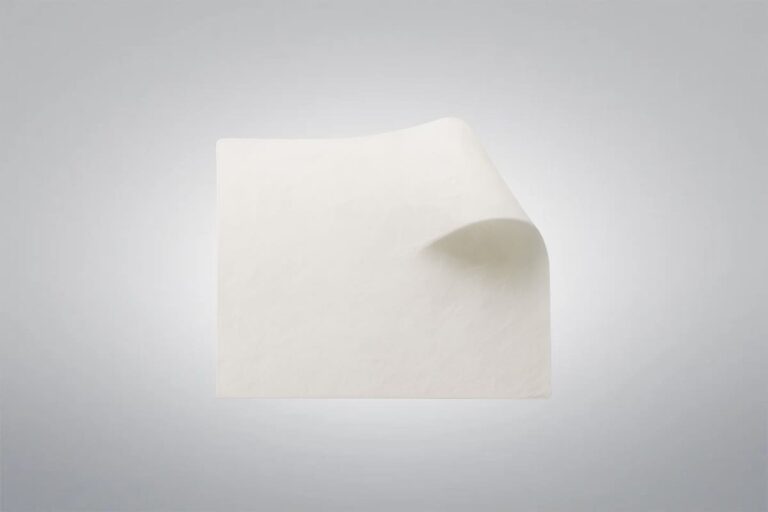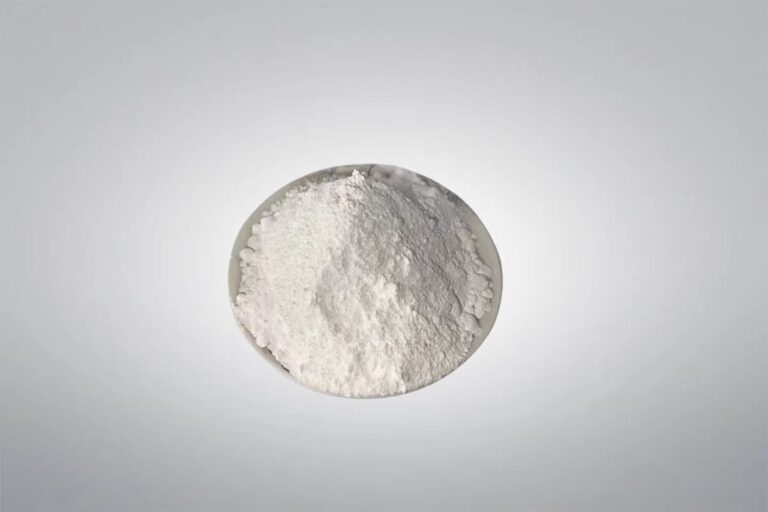Boron Carbide Custom Parts
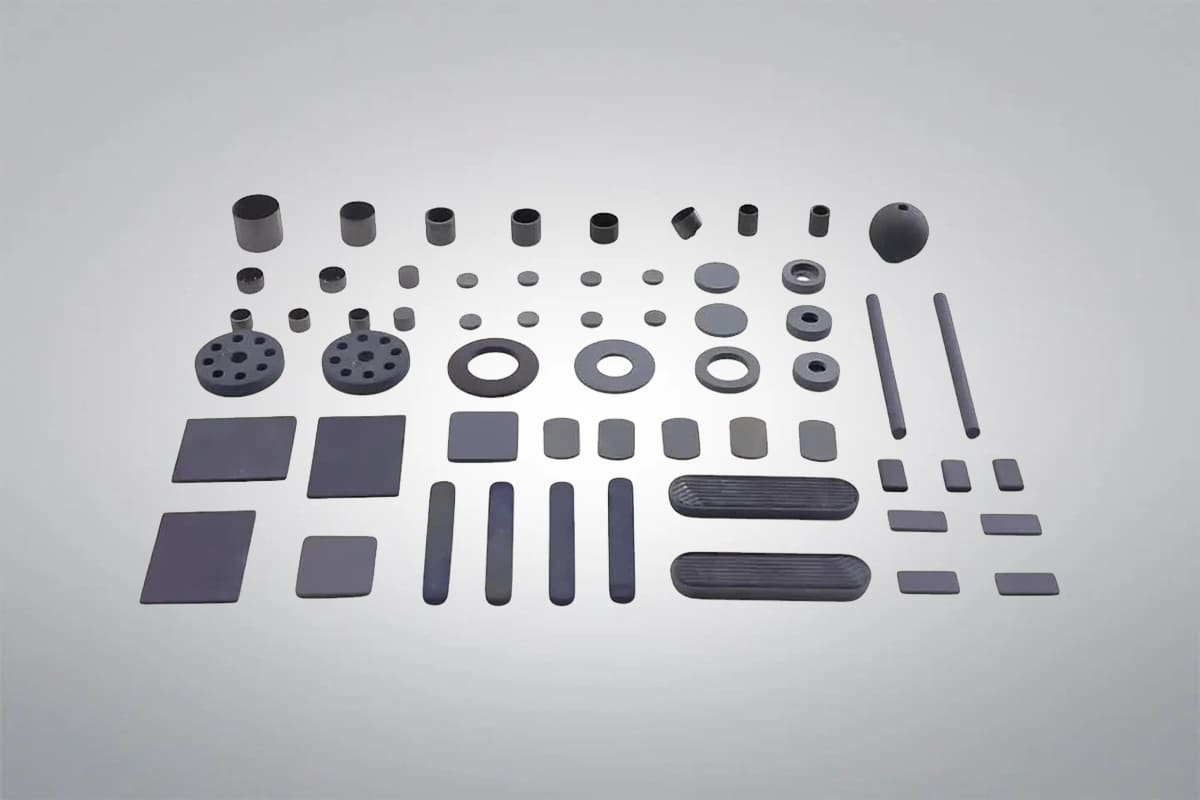
Boron Carbide Custom Parts
Purity: ≥99.5%
Boron Carbide Custom Parts are made from high-purity fine boron carbide powder through high-temperature hot-pressing or pressureless sintering. The high-precision customized solutions for sizes and shapes are available. As a leading supplier and manufacturer of premium boron carbide products, we can supply high-quality boron carbide custom parts with various specifications and competitive prices, offering customized solutions to meet specific requirements.
Or email us at sales@heegermaterials.com.Boron Carbide Custom Parts Data Sheet
| Purity: | ≥99.5% |
| Apparence: | Black or grey |
| Chemical Formula: | B₄C |
| Density: | 2.46-2.62 g/cm³ |
Boron Carbide Custom Parts Description
Boron Carbide is a ceramic material with exceptional hardness close to that of diamond and cubic boron nitride, commonly manufactured through sintering processes. Boron Carbide Custom Parts are made using hot-pressing or pressureless sintering, offering high hardness, wear resistance, and superior high-temperature and corrosion resistance. Their lifespan is three times longer than conventional hard alloys like tungsten carbide and silicon carbide. With the ability to customize sizes, shapes, and specifications, we offer tailored solutions to ensure optimal performance and durability in critical environments. Advanced Ceramics Hub provides high-precision boron carbide custom parts with consistent quality and minimal size variation, suitable for both large-scale and custom production.
Boron Carbide Custom Parts Advantages
- High hardness and high strength
- Excellent thermal shock resistance
- Excellent chemical inertness
- Excellent wear resistance
- Good corrosion resistance
- High temperature resistance
- High bending strength
- Light weight
Boron Carbide Custom Parts Pressureless Sintering Process
- Raw Material Preparation: Use high-purity boron carbide powder and sintering aids.
- Powder Mixing: Mix powder and sintering aids evenly.
- Molding: Shape the powder into the desired form.
- Degassing: Remove volatile components to avoid bubbles or cracks.
- Pressureless Sintering: Sinter at 1600-2000°C.
- Cooling and Inspection: Cool to room temperature and inspect for quality.
Boron Carbide Custom Parts Applications
- Nuclear Industry: Custom-made as neutron-absorbing parts or shielding components for nuclear reactors or radioactive material protection.
- Armor Protection: Shaped into specialized ballistic plates or protective components for military equipment, vehicles, or personal armor.
- Industrial Tools: Fabricated into wear-resistant cutting tools, molds, or abrasives for processing high-hardness materials like metals and ceramics.
- High-Precision Equipment: Crafted into complex, wear- and corrosion-resistant parts for aerospace, semiconductor manufacturing, or precision instruments.
- High-Temperature and Chemical Environments: Customized as furnace linings, chemical reactor components, or nozzles, withstanding extreme conditions.
Boron Carbide Material Properties
Boron Carbide Material Grades
Reaction bonded boron carbide (B4C) is primarily used ballistic armor, providing excellent protection while reducing weight as compared to other armor materials.
| Properties | Units | Reaction Bonded Boron Carbide |
| Flexural Strength, MOR (20 °C) | MPa | 250 |
| Fracture Toughness, KIc | MPa m1/2 | 3.0 – 4.0 |
| Thermal Conductivity (20 °C) | W/m K | 50 |
| Coefficient of Thermal Expansion | 1×10-6/°C | 4.5 |
| Maximum Use Temperature | °C | 1000 |
| Dielectric Strength (6.35mm) | ac-kV/mm | — |
| Dielectric Loss (tan δ) | 1MHz, 25 °C | — |
| Volume Resistivity (25°C) | Ω-cm | 10³ |
Reaction Bonded B4C Advantages:
- High strength
- High hardness
- Cost-effective
- Suitable for large-scale applications
Hot-pressed, also known as pressure assisted densified (PAD), boron carbide is one of the hardest materials available in commercial shapes. This exceptional hardness combined with low density is used in ballistic armor, maximizing protection while minimizing weight.
| Properties | Units | Hot Pressed Boron Carbide |
| Flexural Strength, MOR (20 °C) | MPa | 320 – 450 |
| Fracture Toughness, KIc | MPa m1/2 | 3.0 – 4.0 |
| Thermal Conductivity (20 °C) | W/m K | 45 – 100 |
| Coefficient of Thermal Expansion | 1×10-6/°C | 4.5 – 4.9 |
| Maximum Use Temperature | °C | 2000 |
| Dielectric Strength (6.35mm) | ac-kV/mm | — |
| Dielectric Loss (tan δ) | 1MHz, 25 °C | — |
| Volume Resistivity (25°C) | Ω-cm | 100 |
Hot Pressed B4C Advantages:
- Higher density
- Better mechanical properties
- Ideal for high-strength, high-temperature engineering materials
Pressureless sintered boron carbide combines high purity and the excellent mechanical properties of boron carbide for use in both ballistic armor and semiconductor manufacturing.
| Properties | Units | Sintered Boron Carbide |
| Flexural Strength, MOR (20 °C) | MPa | 450 |
| Fracture Toughness, KIc | MPa m1/2 | 3.0 – 5.0 |
| Thermal Conductivity (20 °C) | W/m K | 43 – 100 |
| Coefficient of Thermal Expansion | 1×10-6/°C | 4.5 – 4.9 |
| Maximum Use Temperature | °C | — |
| Dielectric Strength (6.35mm) | ac-kV/mm | — |
| Dielectric Loss (tan δ) | 1MHz, 25 °C | — |
| Volume Resistivity (25°C) | Ω-cm | 10 |
Pressureless Sintered B4C Advantages:
- High hardness
- Excellent wear resistance
- High chemical stability
- Low density
- Good thermal stability
Boron Carbide Ceramic Machining
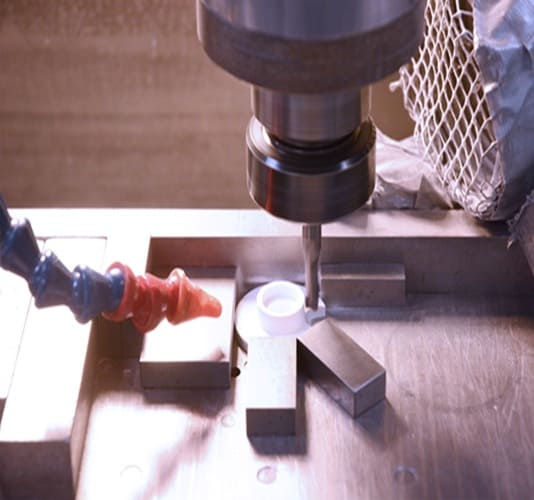
Boron Carbide Ceramic machining is a demanding process used to shape this ultra-hard ceramic into precise components for technical applications. Due to its exceptional hardness and brittleness, machining boron carbide requires specialized tools and careful control to prevent cracking or surface damage. While the material can be shaped more easily in its green or biscuit state, achieving tight tolerances often requires machining after full sintering, which involves diamond-based techniques. The common machining methods include:
- Diamond Cutting: Diamond-coated tools are essential for cutting fully sintered boron carbide, enabling accurate shaping and smooth surface finishes.
- Precision Grinding: Used to achieve fine tolerances and clean finishes. This process is slow and requires careful handling to avoid micro-cracks or structural damage.
- Ultrasonic Machining: Applies high-frequency vibrations with abrasive slurry to remove material gently, suitable for intricate and delicate shapes.
- Laser Cutting: A non-contact technique effective for pre-sintered material or thin sections, offering clean edges with minimal thermal stress.
- Green Machining: Carried out before sintering, allowing easier shaping of complex geometries. However, post-sintering shrinkage (~20%) must be accounted for in final dimensions.
Boron Carbide Ceramic Packaging
Boron Carbide ceramic products are typically packaged in vacuum-sealed bags to prevent moisture or contamination and wrapped with foam to cushion vibrations and impacts during transport, ensuring the quality of products in their original condition.
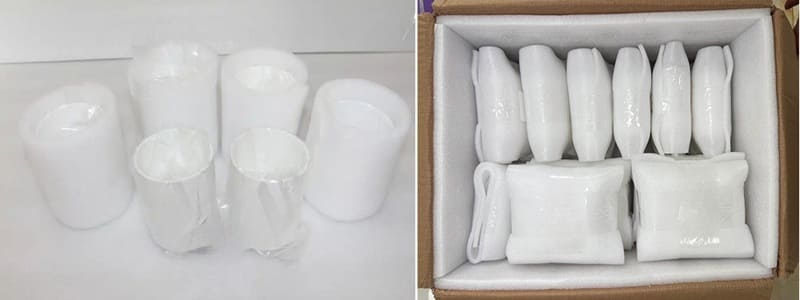
Download
Get A Quote
We will check and get back to you in 24 hours.
